Related Research Articles
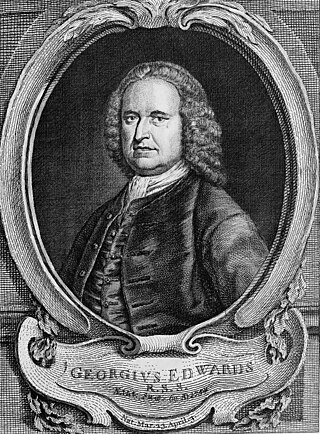
George Edwards was an English naturalist and ornithologist, known as the "father of British ornithology".

The etching revival was the re-emergence and invigoration of etching as an original form of printmaking during the period approximately from 1850 to 1930. The main centres were France, Britain and the United States, but other countries, such as the Netherlands, also participated. A strong collector's market developed, with the most sought-after artists achieving very high prices. This came to an abrupt end after the 1929 Wall Street crash wrecked what had become a very strong market among collectors, at a time when the typical style of the movement, still based on 19th-century developments, was becoming outdated.

The New York Etching Club, formally New York Etchers Club, was one of the earliest professional organization in America devoted to the medium of etching. Its founders were inspired by the Etching revival that had blossomed in France and England in the middle of the 19th century. The purpose of the club was to create and promote etchings that did not merely reproduce existing paintings, but were original creations of art in their own right.
Ernest Stephen Lumsden, was a distinguished painter, noted etcher and authority on etching.
Louis Conrad Rosenberg (1890–1983) was an American artist, architect, author, and educator active between 1914 and 1966 known for his precise staging and rendering of architectural scenes in Europe and the United States during the 1920s and 1930s.
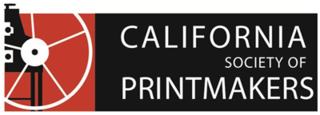
The California Society of Printmakers (CSP) is the oldest continuously operating association of printmakers and friends of printmakers in the United States. CSP is a 501(c)(3) non-profit arts organization with an international membership of print artists and supporters of the art of fine printmaking. CSP promotes professional development and opportunity for printmakers, and educates artists and the public about printmaking. New members are admitted by portfolio review. Friends, Institutional and Business members are admitted by fee. CSP is based in the San Francisco Bay Area, California.

Ralph Mallory Kovel was an American author of 97 books and guides to antiques, co-authored with his wife, Terry Kovel. They wrote a nationally syndicated collectibles column that began in 1955, which is still in production as of 2022.
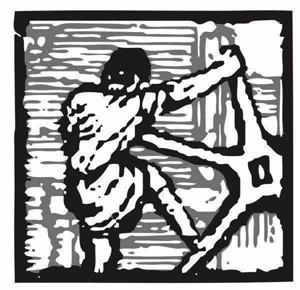
The Society of American Graphic Artists (SAGA) is a not for profit national fine arts organization serving professional artists in the field of printmaking. SAGA provides its members with exhibition, reviews and networking opportunities in the New York City area and, in addition to various substantial exhibition prizes, many purchase awards allow SAGA members to be included in major U.S. museum collections.

Chicago Society of Etchers was founded in January 1910, the first organization of etchers in the country. There were 20 members to start and by 1930 there were 150 members. Membership extended outside of the United States, including artists from England, France, Italy, Germany, Sweden, India, China and Japan.
Ernest Frank de Soto was an American master printmaker and lithographer, who specialized in American and Mexican prints during his career. He established and directed his own printing workshop, the de Soto Workshop, from 1975 to 1993.

Alfred Heber Hutty was a 20th-century American artist who is considered one of the leading figures of the Charleston Renaissance. His oeuvre ranges from impressionist landscape paintings to detailed drawings and prints of life in the South Carolina Lowcountry. He was active in local arts organizations, helping to found both an art school and an etchers' club.
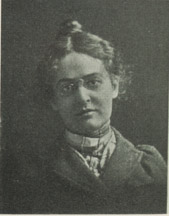
Frances Gearhart was an American printmaker and watercolorist known for her boldly drawn and colored woodcut and linocut prints of American landscapes. Focused especially on California's coasts and mountains, this body of work has been called "a vibrant celebration of the western landscape." She is one of the most important American color block print artists of the early 20th century.
May Gearhart was an American printmaker who was part of an early 20th century circle of Southern California printmakers strongly influenced by the Arts and Crafts movement and Japanese art.
Constance Mary Pott, RE, was an English printmaker and teacher active during the late nineteenth century and the twentieth century. She became technical and teaching assistant to the teacher and printmaker Sir Frank Short at the Royal College of Art from 1902 until Short's retirement in 1924. In her day she was recognized as a pioneer in the etching revival, for her dynamic, versatile mastery of technique and line, for the spacious evocation of landscape in her plates, and for her formal professional occupation, all exceptional achievements by any standards, but more especially so in their combining in her to overcome societal disapproval of professions for women. As a teacher she had a powerful and acknowledged influence upon a whole generation of engravers who passed through the College. However, she long outlived the fashion of that movement, and her central role in it was for a time almost forgotten. Examples of her own works, principally etchings, are held in leading national collections, and appear in the salerooms. She is sometimes confused with her mother, Constance Mary née Fearon, Mrs Henry Pott (1833-1915).

Eleanor Axson Sayre was an American curator, art historian, and a specialist on the works of Goya. She was the first woman to serve as departmental curator at the Museum of Fine Arts, Boston. Working as curator of prints and drawings, she collected Goya's etchings from museums around the world to catalogue and create international exhibits. She was awarded a knighthood with the Lazo de Dama in the Order of Isabella the Catholic by Spain in 1975 and the Gold Medal of Merit in the Fine Arts in 1991.

Carl Zigrosser (1891–1975) was an art dealer best known for founding and running the New York Weyhe Gallery in the 1920s and 1930s, and as Curator of Prints and Drawings at the Philadelphia Museum of Art between 1940 and 1963. In the 1910s, he was active in New York's anarchist movement.
Lynn Geesaman was an American photographer.
Susan Minns was an American biologist, philanthropist, and collector. She was one of the first women to study at the Massachusetts Institute of Technology. She created a notable and extensive collection of art and literature relating Danse Macabre, a portion of which is now held by the University of Louvain. Minns helped establish the Marine Biological Laboratory and donated generously to numerous scientists, institutions and to her home state of Massachusetts.

The Times Square Show was an influential collaborative, self-curated, and self-generated art exhibition held by New York artists' group Colab in Times Square in a shuttered massage parlor at 201 W. 41st and 7th Avenue during the entire month of June in 1980. The Times Square Show was largely inspired by the more radical Colab show The Real Estate Show, but unlike it, was open 24 hours a day, 7 days a week, in what was then a Times Square full of porno theaters, peep shows, and red light establishments. In addition to experimental painting and sculpture, the exhibition incorporated music, fashion, and an ambitious program of performance and video. For many artists the exhibition served as a forum for the exchange of ideas, a testing-ground for social-directed figurative work in progress, and a catalyst for exploring new political-artistic directions.
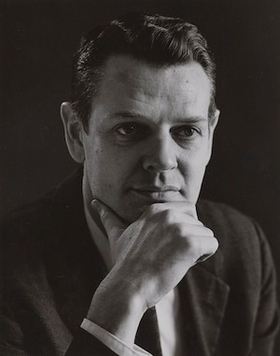
Roger Lynn Crossgrove was an American artist and educator who served as Professor of Art at the Pratt Institute and the University of Connecticut for a total of 35 years. He was best known for his monotype watercolors and photographs of the male nude.
References
- ↑ Peters, Lisa (1982). "Print Clubs in America". The Print Collector's Newsletter. 13 (3): 88–91. ISSN 0032-8537. JSTOR 44131087.
- ↑ "American Etchers Abroad, 1880-1939". www.tfaoi.com. Brandywine River Museum. 2006. Retrieved 2021-08-19.
- 1 2 3 Peters, Lisa (1982). "Print Clubs in America". The Print Collector's Newsletter. 13 (3): 88–91. ISSN 0032-8537. JSTOR 44131087.
- ↑ "Etchers of Paris: 1850-1900". Brooklyn Museum. Retrieved 2021-08-19.
- ↑ Bradley, Barbara J., ed. (1994). The Print Club of Cleveland: 1969-1994. Cleveland: The Print Club of Cleveland. ISBN 0940717247.
- ↑ Burk, Teresa. "Research Guides: Atlanta Print Collection: SGC International Print Portfolios". SCAD Libraries. Retrieved 2021-08-19.
- Engelbrecht, Theresa Moir. "Inter-Collected: The Shared History of the Print Club and Museum Collection," Art in Print Vol. 7 No. 2 (July–August 2017).
- Fredericks, Stephen A., personal email correspondence with Maryly A. Snow, 2009
- Goddard class syllabus Goddard, Stephen. History of Art 706, University of Kansas
- Kushner, Marilyn S. Genesis of the Twentieth-Century Print Club, pages 82–95, in American Identities: Twentieth-Century Prints from the Nancy Gray Sherrill, Class of 1954, Collection. Wellesley, MA : Davis Museum and Cultural Center, Wellesley College, c2004. 309 pp.
- Lang, Gladys Engel and Kurt Lang (2001). Etched in Memory: The Building and Survival of Artistic Reputation, Second edition. Chicago: University of Chicago Press. pp. 437 pp.